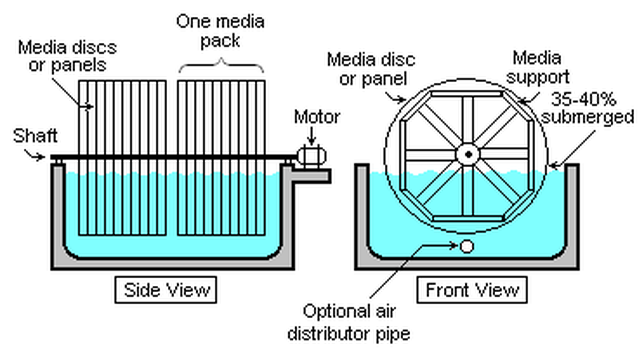 Standard RBC
Standard RBC Early RBC systems had problems with structural failure (mainly shafts). However most of these problems have been addressed and modern RBC systems do not have these problems. Most installations have multiple RBCs in stages that treat soluble BOD before going to separate nutrient removal sections.
Often we see RBCs used in conjunction with a conventional suspended growth system. The RBC can serve as a roughing filter to reduce soluble BOD prior to the suspended growth system. Most commonly, we have an RBC after the suspended growth system to remove ammonia via biological ammonia oxidation (nitrification) where a fixed film system has greater stability than a suspended biological process.
Advantages
- Lower energy use than suspended growth systems
- Stable operation even with hydraulic and organic load variation
- Low biological solids production
- Sloughed solids tend to settle readily in secondary clarifier without polymer addition
- Simple to operate with little daily operator activity required
- Sludge return is not required (biomass remains as film on discs) – some systems require recycle by design
- Smaller foot print than suspended growth systems
Disadvantages
- Must be enclosed to maintain ideal temperatures during cold months
- Media and shafts are more specialized than most common wastewater equipment
- As with all fixed film systems the media can be fouled by oils and grease in a spill event
- Toxic or quasi toxic shocks can make maintaining a biofilm difficult. This can be addressed with response with bioaugmentation cultures (bugs) or adding a biomass recycle from the clarifiers

 RSS Feed
RSS Feed